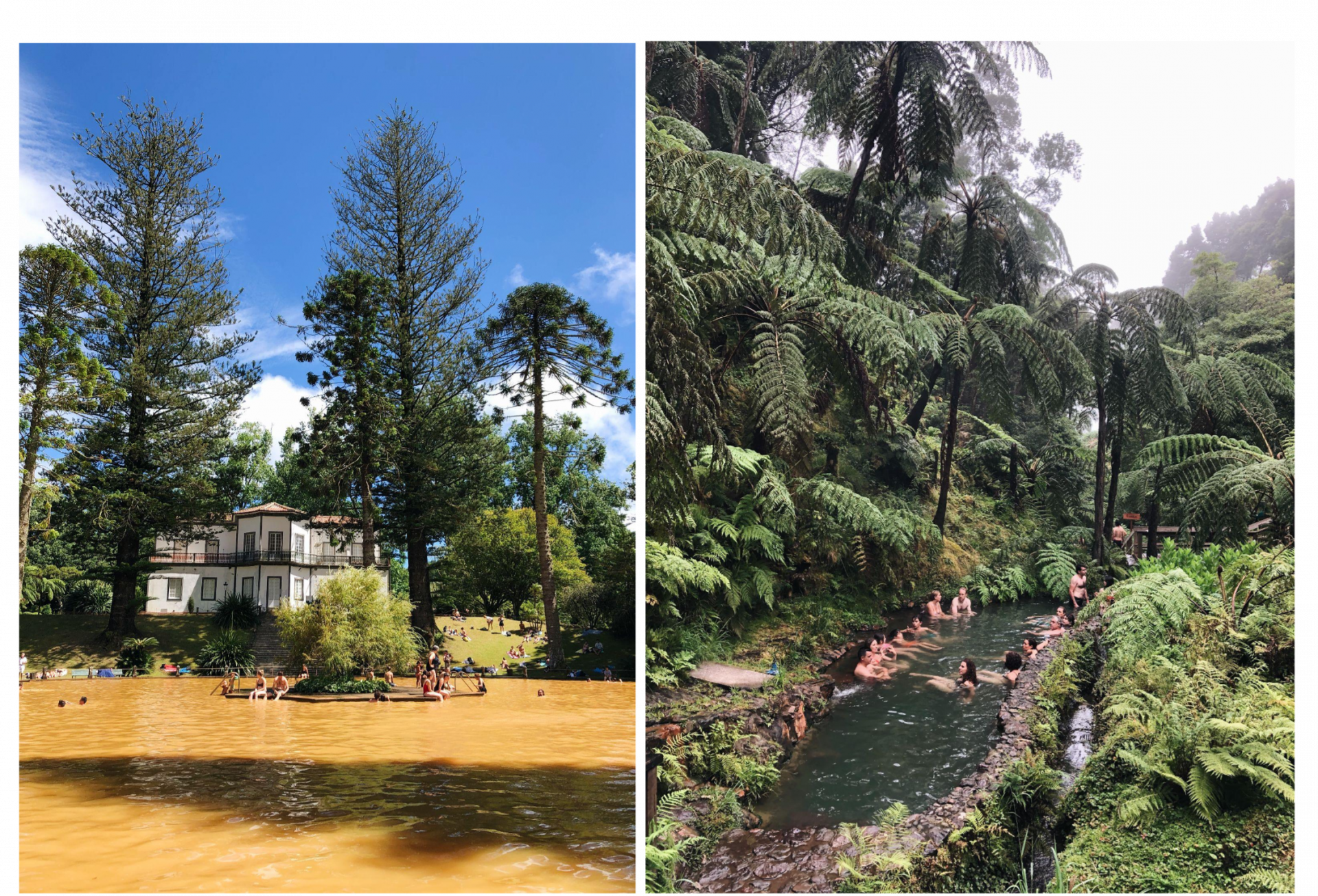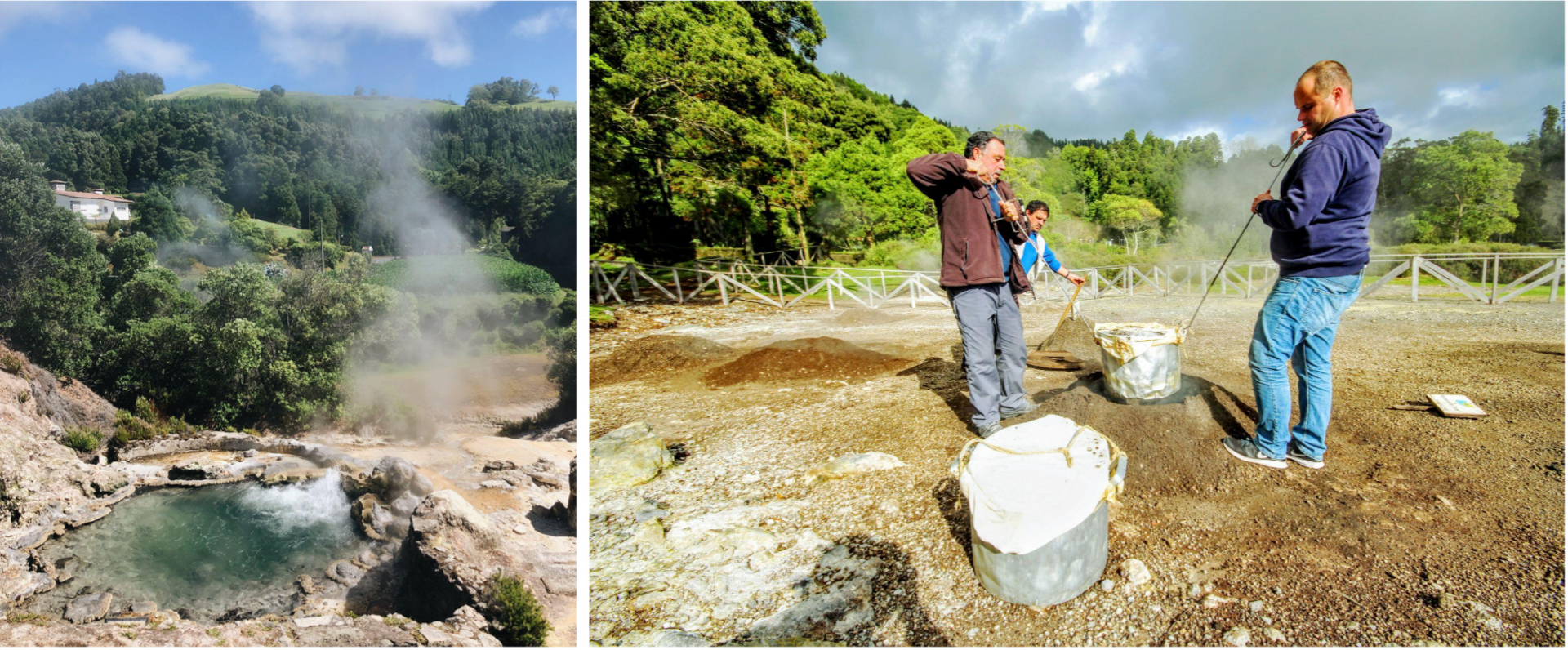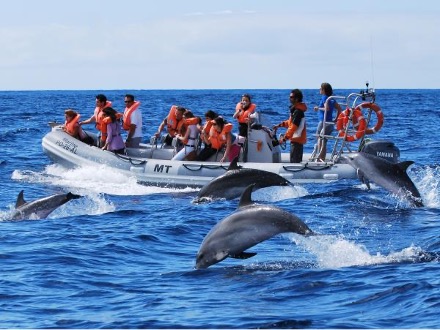A travel story from Azores By Rafaela Ribeiro The Azores is a Portuguese archipelago that contains 9 volcanic islands, located in the middle of the Atlantic Ocean, which makes its climate a sub-tropical one. The Azores are for the 5th time on the top 100 of most sustainable destinations in the world (awarded by Green Destinations), and the best Atlantic destination (visit Azores https://www.visitazores.com/en), it is also considered one of the best places for whale watching and geotourism. In short, geotourism is a type of tourism that enhances the geographical character of a place, such as its environment, heritage, culture, and the wellbeing of its residents. This holiday I decided to visit São Miguel, the biggest island of the Azores. As a Portuguese person, throughout my life, I heard a lot about the beauty of this island, from friends and family that visited or lived there. Therefore, São Miguel was on top of my bucket list of places to visit. The fact that the islands are volcanic allows geothermal baths, which are offered by the natural pools and jacuzzis with water from the hot springs! Temperatures from the hot springs can reach 40ºC, making it even more appealing on rainy colder days. As the climate is constant throughout the whole year (with an average of 17ºC), Azores can be visited and appreciated during the whole year, which makes it less susceptible to overtourism. What can you find in São Miguel? And why is it worth visiting? There are many reasons, but let’s start from the beginning. São Miguel is known for its rich nature, green mountains, and its unique lakes and beaches. There are many hiking trails and natural parks where you can enjoy and immerse yourself in nature. LEFT: Lagoa do Fogo, RIGHT: Furnas Lake The island is filled with large volcanic craters that once were active. The past volcanic activity on the island left natural pools and beaches with hot water. The existence of pseudocraters in the island originated vapor explosions due to the contact of hot lava and the ocean water, which consequently warms up the ocean water in a natural way. This phenomenon can be experienced in Ponta da Ferraria. These same vapor explosions happen all around the island, especially in Furnas. Furnas is known for its two active volcanoes, which consequently leads to the existence of outstanding geothermal activities. You can visit several geothermal parks, such as Terra Nostra and Poça da Dona Beija, both with rich tropical nature, forming a unique botanic garden. At the same time that you enjoy the magnificent nature, you can also relax in the hot springs or under the hot waterfalls. LEFT: Terra Nostra Garden – Natural pool, RIGHT: Caldeira Velha – Hot Spring Besides that, vapor explosions are used as a way to cook food under the ground. Can you imagine such a thing? In Furnas, more specifically in Caldeiras Vulcânicas or near the Lagoa das Furnas you can observe how the traditional Portuguese dish is cooked in a natural way. This so-called geocooking is located in the Açores UNESCO Global Geopark. (If you are interested in seeing how this dish is made underground you can take a look at the video below). LEFT: (Caldeira vulcânica) Volcanic “boilers”, RIGHT: Geocookiinig in Furnas São Miguel combines the geological heritage, with the protection of its unique nature and breathtaking landscapes with the sustainable development of their communities. In São Miguel, many people work in agriculture, herding cows, fishing, and in tourism-related jobs. Sustainability as a key in the Azores As mentioned before, Azores uses its natural potential, which means using geothermal energy, geothermal heat to cook and bath. Did you know that the only two tea plantations in Europe are located on São Miguel island? If you are a tea lover, you must visit Gorreana Tea Factory (has been operating since 1883!), which produces biological black and green tea. You can walk in the tea fields, observe the harvest, enjoy the ocean view and have a free cup of tea. Besides the good care and protection of cows when growing, other animals live freely on the island as well. That’s also the case with our marine animal friends, such as dolphins and whales. The Azores have the widest variety of whale species in the world, consisting of over 20 different species. Back in the days, when the lack of information was a serious issue, the Portuguese archipelago was known for its maritime hunting practice. Hunting big animals such as whales were seen as brave and impressive, which led hunters to think that saving bones, teeth, etc. from these animals were a good idea to show later to their friends. The hunting technique nowadays is still used. But don’t worry! Hunting whales has been forbidden for a long time in Portugal! So, you might be wondering why it is still used. Well, the answer can be unexpected. As the technique was mainly practiced by experienced men, located on the highest points of the island and using tools such as binoculars, whale watching operators thought it was a great idea to keep the tradition and the technique to find whales and dolphins. Thus, to use this practice for responsible tourism. Whale watching is made in the open ocean, not controlled by any means, any animal. The fact that men on whale-watching boats are in direct contact with whales’ observers on land (coastal lookouts), allows the boats to follow these animals in distance, without interfering with their route, and without using techniques to attract these animals or maintain them in a certain space for tourism purposes. One thing that I learned during my whale watching experience, accompanied by marine biologists, was that there is a huge variety of whale and dolphin species. The frequent dolphin species that live in the waters of São Miguel are the most social type of Dolphins, meaning that they don’t mind the presence of people and boats around them. Whale watching in the Azores is a very important activity for local communities. As well as for researchers, since this activity provides an opportunity to investigate more about whales and dolphin species and ways to protect them. Some of the whale-watching operators, such as Futurismo, are at the same time researches of cetaceans behavior, which makes this activity a win-win for tourists and for scientist researchers. Whale watching operated by Futurismo Community-Based Tourism in São Miguel Locals in São Miguel island are very welcoming. I personally had an amazing experience and felt part of the community. I opted by staying at a family house of a friend of mine, as I knew that would be good for both parties. For me, that got to know them, and the region better, and to them, that received some money in return for my stay. Portugal is very religious, and thus it celebrates a lot of saint days and Christian holidays, which means that pilgrimages are a very common practice. In São Miguel every year there are Lent Pilgrimages, and everyone is welcome to join. For eight days pilgrims walk along the coast, visiting all churches that have a virgin’s image. At the end of each day, local families host some of the pilgrims, providing them dinner, and accommodation. Community-Based Tourism is not yet provided in the Azores. However, Ambrósio (2019) supports the idea that this Lent Pilgrimage might be the starting point of Community-Based Tourism on the island.






This Post Has 0 Comments